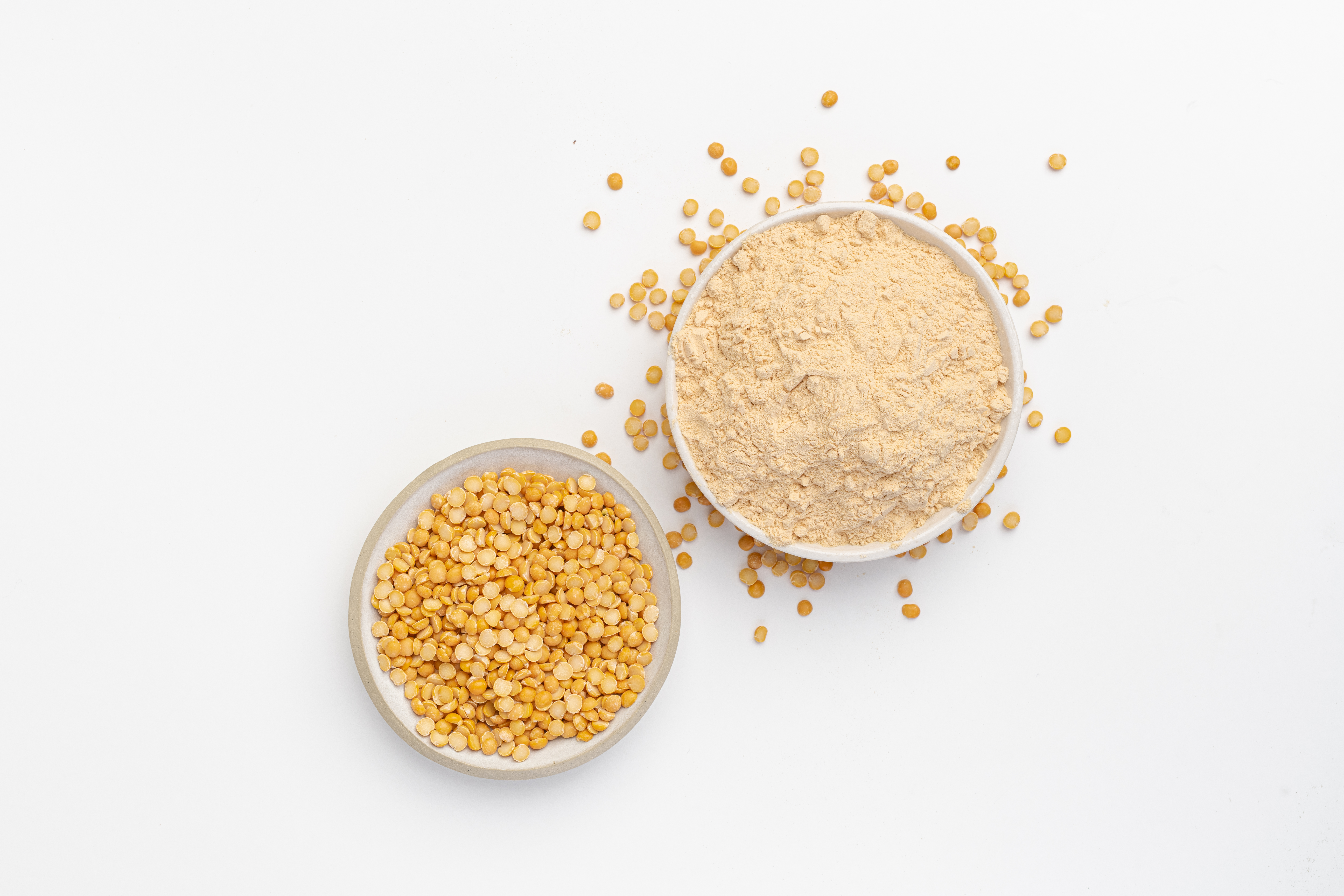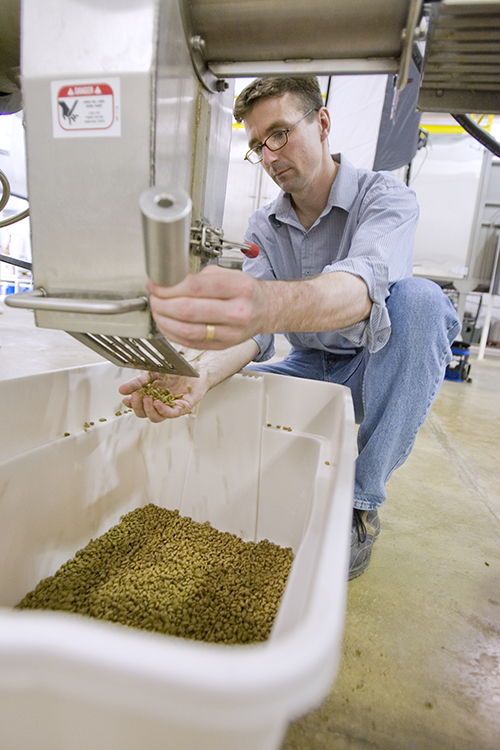By Noelle Chorney
Pulse Canada and Saskatchewan Pulse Growers (SPG) continue to work together to expand markets and create demand for Canadian pulses, primarily grown in Saskatchewan.
Dr. Julianne Curran, Vice President of Market Innovation at Pulse Canada, unveiled a revised market development strategy, extending the original 25% by 2025 target to 2030, where 25% of Canadian-grown pulses go to new and diversified value-add markets. The new approach customizes growth scenarios for different crops such as peas, lentils, faba beans, and dry beans, acknowledging their unique processing, end-use opportunities, and production realities. The strategy focuses on target audiences, processing streams, and regions with significant volume and higher value opportunities for each crop.
Pulse Canada’s team engages with processors and end-users, addressing technical gaps and bottlenecks to foster demand for Canadian pulses. Currently, 80% of Canadian-grown pulses are exported, mostly unprocessed, to international markets affected by price sensitivity and geopolitical instability.
“We are working to shift a higher proportion of our pulse crops toward value-added processing and to markets that are closer to home, and generally more stable,” says Dr. Curran.
The strategies aim to build demand for Canadian peas and pea ingredients like protein, starch, and fibre, whole lentils in foodservice and retail, lentil ingredients like flour, faba beans for milling and fractionation, and domestic consumption of dry beans. Chickpeas are already experiencing rising consumption in the United States (U.S.), benefitting Canadian producers without additional market diversification efforts.
Pea Ingredients
Canada’s pea production has seen significant growth, particularly in ingredient processing and specialty products. Dr. Curran emphasizes the need to boost volume demand for peas as value-added ingredients, including protein, starch, and fibre, for human food, pet food, and sustainable feed. She says, “The goal is to have 50% of Canada’s pea crop processed into value-added products for the U.S., Europe, and South America while tripling domestic pea use by 2030.”
A key event in promoting Canadian pea ingredients was the Pulse Immersion Days held in Winnipeg in March 2023. The program highlighted the benefits of sourcing pea ingredients from Canada and provided insights into processing and research and development (R&D). Participants engaged in hands-on demonstrations, technical sessions, and pulse product tastings.
“Pulse Canada continues to engage with food companies seeking knowledge about Canadian pea ingredients and pulses. Many companies have already requested meetings to address their R&D inquiries,” says Dr. Curran.
Additionally, Pulse Canada aims to create high-value and volume end uses for pea starch, a by-product of pea protein processing. They are exploring industrial applications such as bioplastics and sharing information on emerging opportunities with the processing sector and research community.
Lentils
To achieve the target of creating new and diversified markets for 25% of Canadian lentils (625,000 tonnes) by 2030, the strategy focuses on increasing demand and processing capacity for lentil ingredients, especially flours, used in various food applications. Pulse Canada’s Pulse Flour Hub supports R&D professionals in understanding pulse flours, particularly lentil flour, aiding successful product development.
Lentil ingredients were showcased at the Institute of Food Technologists (IFT) Cooking Up Science event, demonstrating lentil flour’s applications in ground meat, batter, breading, and pasta. “Euromonitor estimated approximately 250,000 tonnes of pulse flours were used in the U.S. food sector alone, with lentil flour following a trajectory similar to chickpea flour,” says Dr. Curran.
Amber Johnson, Director of Marketing & Communications at SPG, spearheads outreach efforts for whole lentils in the foodservice industry, targeting high-volume restaurant chains, colleges, universities, and non-commercial operators in the U.S. and Canada. Johnson says, “Momentum is picking up now that we are in our first true post-pandemic year. One 100-unit restaurant chain launched the Chicken Street Corn Salad featuring lentils which has now become a signature menu item due to its popularity.”
Lentils.org launched the Learning Hub offers free virtual training, promoting Canadian-grown lentils as an affordable and versatile source of plant protein. The foodservice outreach program is expanding in Europe, with ongoing efforts in the Netherlands and plans for the United Kingdom (U.K.) and Germany.
Faba Beans
Despite having a smaller acreage in Canada, faba beans are gaining interest and demand from the industry. The strategy aims to have 75% of Canada’s faba bean crop utilized for value-add processing, pet food, and feed by 2030.
Two virtual events were held recently, specifically focused on faba beans. One provided support to industry stakeholders on regulatory pathways for using faba beans as a pet food ingredient in the U.S., while the other was a micro-summit event highlighting the latest research on faba bean functionality in food.
Dr. Curran says, “There is a lot of interest in faba beans, and these events serve as a convenient way to access technical information and expand understanding and knowledge of these ingredients. Pulse Canada has gathered extensive data on faba beans, including functionality, performance, quality, marketing advantages, and innovation trends, to create a comprehensive technical resource on processing and nutrition benefits.”
Pulses Help Meet Sustainability Targets
Pulse Canada continues to see companies focus on environmental sustainability across all crops. Dr. Curran notes that companies using pulses from Canada can improve their greenhouse gas emissions metrics, making pulses an attractive option for reducing environmental impacts.
Canadian farm and production system data are more detailed and accurate than any other country, and Pulse Canada actively markets this data to food manufacturers, pet food, and feed processors, emphasizing the value of Canadian production systems.
In Saskatchewan, the diverse rotation of pulse crops is essential for growers’ profitability, and the joint efforts of Pulse Canada and SPG will continue to build momentum beyond 2025, leveraging the environmental, health, and functional benefits of pulse crops.



